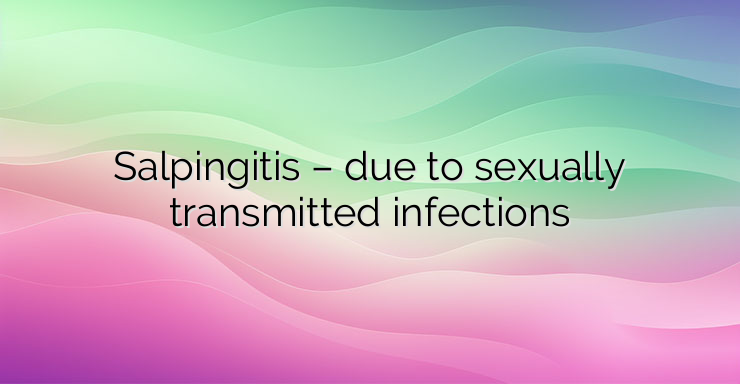Salpingitis is an inflammation of the ovaries, most often occurring as a continuation of the inflammation of the fallopian tubes. The condition may involve just one or both ovaries. Salpingitis usually develops as a complication of one or another sexually transmitted infection, most often gonorrhea. It usually develops inflammation of the cervix, followed by bilateral involvement of the fallopian tubes and then the ovaries. It is possible that the entire pelvic cavity is involved in the inflammatory process. Another typical cause is chlamydia, which also reaches the ovaries from the fallopian tubes. In addition to the ascending route from the fallopian tubes, pathogenic agents can also reach the ovaries via the blood, lymphatic route or directly during surgical interventions or abortion. The infection, for example, may originate from the intestinal flora, from the dispersal of tubercular bacteria in the breakdown of necrotic lung tissue, or from purulent or conditionally pathogenic microorganisms. Acute salpingo-oophoritis (inflammation of the ovary and tubes) is very painful, unilateral or bilateral, occurring against the background of increased white discharge and increased temperature. If the inflammation covers the lining of the abdominal organs (peritonitis), nausea, flatulence, and less often vomiting are also observed. If endometritis also occurs, uterine bleeding occurs. Palpation of the ovaries is difficult due to the severe pain. In its other sections, the abdomen is soft, calm. During a vaginal examination and movement of the cervix, pain is detected, and the uterus is softened and enlarged. In the course of antibiotic treatment, residual abscesses often remain unaffected in the ovary. This creates conditions for relapse, in which there is repeated alternation of exacerbations with periods of lull. Exacerbations are characterized by an increase in body temperature and an acceleration of the pulse. If adjacent abdominal organs are affected, fecal or urinary incontinence develops. NEWS_MORE_BOX Subacute salpingo-oophoritis is painful, but less intense. If the condition becomes chronic, the pain subsides, the temperature normalizes, and the peritoneal irritation disappears. Chronic salpingo-oophoritis is a risk factor for infertility, as it causes anatomical and physiological changes in the ovaries and fallopian tubes. In half of the cases of chronic salpingo-oophoritis, menstrual disturbances are observed. The diagnosis is made by a gynecologist who conducts an ultrasound examination of the ovaries and fallopian tubes, appoints microbiological, blood and other tests. Treatment is usually carried out with antibiotics and/or metronidazole, depending on the type and antibiotic sensitivity of the causative agent, as well as the patient’s individual tolerance. If there is an accumulation of purulent deposits in the genital tract, they are evacuated surgically.


Leave a Reply